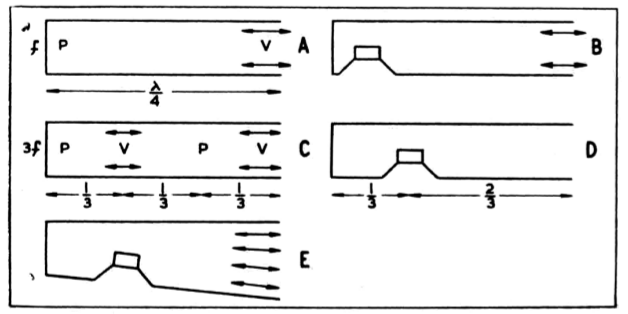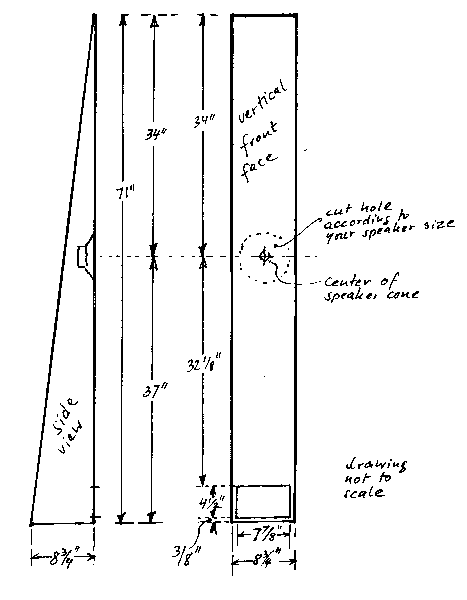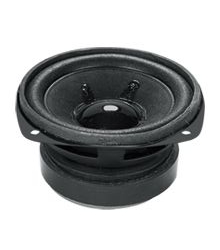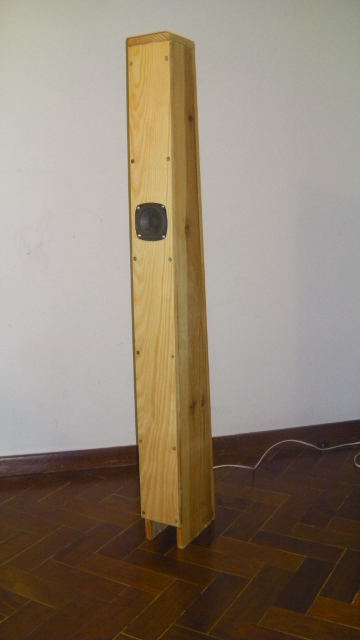Pipe enclosures were design in the 30's by Paul G.A.H. Voigt, it was subject to a patent (GB447749 (A) ― 1936-05-18). The principle is quite simple

Probably inspired by pipe organ tubes.
The image below shows the Herbert Jeschke's Voigt Pipe for a build the pipes for a undetermined 8" driver: the classical way of building the Voigt pipe.

The angle is given by
(atan (/ (+ 8 (/ 3.0 4.0)) 71.0));0.12262114279484264 (/ (* (atan (/ (+ 8 (/ 3.0 4.0)) 71.0)) 180) pi);7.025673961215487
Position of the driver: 
Length of the pipe:

Actually it should be
 removing the area of the speaker at the bottom,
removing the area of the speaker at the bottom,  is the speaker resonant frequency.
is the speaker resonant frequency.
Here is my hack on it with a Fonestar 3inch=7.5cm speaker (20-14.000 Hz, 8 Ω, 89 dB - 1 W/1 m)

Not really a full-driver, but for 10Eurs, who can complain.

(atan (/ 15.0 108));0.13800602365751946 (/ (* (atan (/ 15.0 108)) 180) pi);7.907162702958458
Top area:
(* 7.0 7.5);52.5
Bottom area:
(* 7.0 15.5);108.5
Speaker position:
(/ 108.0 (+ 2 (pow (/ (* 7.0 7.5)
(* 7.0 15.5)) .5)));40.06516757332509
Further reading:
- EXPERIMENTS WITH TAPERED PIPES BY DAVID B. WEEMS
- The Voigt Pipe: The world's most easy-to-build High End Loudspeaker
- Voigt Pipes -- the simplest hi end loudspeakers you can do-it-yourself!
Some more thoughts soon.
Created: NaN
Last updated: 23-01-2025 [00:04]
For attribution, please cite this page as:
Charters, T., "Voight pipe enclosures": https://nexp.pt/voigt.html (23-01-2025 [00:04])
(cc-by-sa) Tiago Charters - tiagocharters@nexp.pt